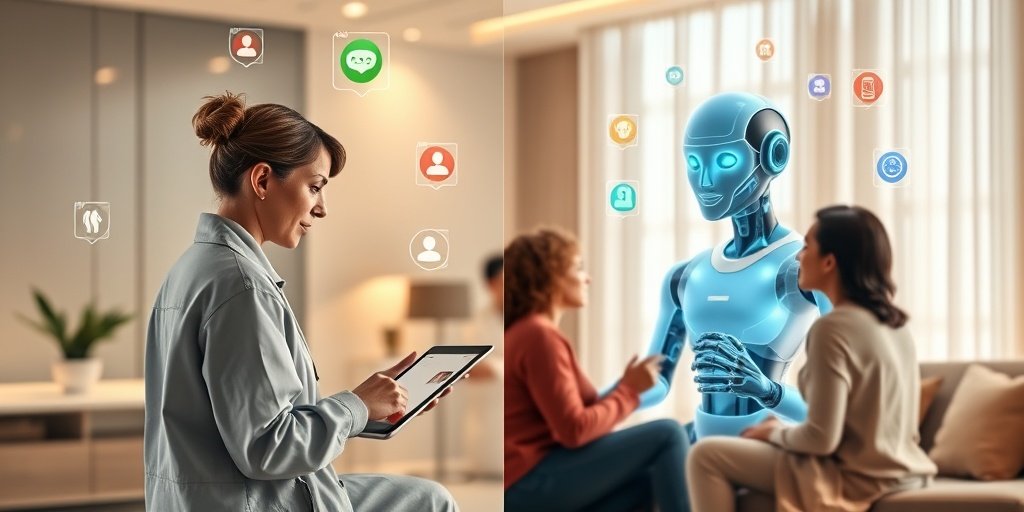⚡ Quick Summary
This study investigates the impact of attractions and social attributes of chatbots on users’ media dependency and usage intention, highlighting the mediating roles of parasocial interaction and emotional support. The findings reveal that users’ perceptions significantly influence their engagement with chatbots like ChatGPT.
🔍 Key Details
- 📊 Sample Size: 1,553 responses from an online survey
- 🧩 Key Variables: Social attraction, task attraction, perceived competence, perceived warmth
- ⚙️ Methodology: Structural equation modeling (SEM)
- 🏆 Focus: Mediating effects of parasocial interaction and emotional support
🔑 Key Takeaways
- 🤖 Chatbots can foster emotional connections through their social attributes.
- 💬 Parasocial interaction enhances users’ emotional support from chatbots.
- 📈 Media dependency is influenced by users’ perceptions of chatbot characteristics.
- 🔗 Emotional support serves as a bridge linking chatbot attributes to user engagement.
- 🌐 The study extends para-social interaction theory into human-chatbot communication.
- 📊 Structural equation modeling provides a robust framework for analyzing user behavior.
- 💡 Insights gained can inform the design and optimization of chatbot applications.

📚 Background
As artificial intelligence continues to evolve, understanding the dynamics of human-chatbot interaction becomes increasingly important. Chatbots are not just tools; they can serve as companions that provide emotional support and foster connections. This study aims to delve into how the attractions and social attributes of chatbots influence user behavior and emotional engagement.
🗒️ Study
Conducted through a cross-sectional online survey, this research gathered data from 1,553 participants to explore the relationships between various chatbot characteristics and users’ behavioral responses. The study employed structural equation modeling (SEM) to analyze the complex interactions among social attraction, task attraction, perceived competence, and perceived warmth, alongside their effects on media dependency and usage intention.
📈 Results
The findings indicate that the attraction and social attributes of chatbots significantly contribute to users’ ability to form parasocial interactions and receive emotional support. These interactions, in turn, enhance users’ media dependency and intention to use chatbots. The study effectively demonstrates the psychological pathways linking chatbot characteristics to user engagement.
🌍 Impact and Implications
The implications of this research are profound, suggesting that enhancing the emotional connection between users and chatbots can lead to increased engagement and satisfaction. By understanding these dynamics, developers can create more effective and user-friendly chatbot designs, ultimately improving the overall experience in human-computer interactions. This study paves the way for future research in the field of human-robot emotional connections.
🔮 Conclusion
This study highlights the critical role of emotional connections in the interaction between humans and chatbots. By focusing on the attractions and social attributes of chatbots, we can better understand how to foster meaningful user engagement. The findings encourage further exploration into the emotional dimensions of human-AI relationships, promising exciting advancements in chatbot technology.
💬 Your comments
What are your thoughts on the emotional aspects of chatbot interactions? Do you believe that enhancing these connections can improve user experiences? 💬 Share your insights in the comments below or connect with us on social media:
Effects of attractions and social attributes on peoples’ usage intention and media dependence towards chatbot: The mediating role of parasocial interaction and emotional support.
Abstract
PURPOSE: It is important to explore the relationship between humans and chatbots to improve human-robot interaction in the era of artificial intelligence. This study aims to explore the effects of attractions and social attributes of chatbots on users’ media dependency and usage intention of chatbots, as well as the role of users’ para-social interaction and emotional support gained from chatbots.
METHODS: A total of 1,553 responses were collected based on a cross-sectional online survey. Utilizing the structural equation modeling approach, this study tested the relationships among exogenous variables (social attraction/task attraction, perceived competence/perceived warmth), endogenous variables (usage intention/media dependence), and mediating variables (para-social interaction/emotional support).
RESULTS: The results show that the attraction and social attributes of chatbots, represented by ChatGPT, enable users to construct para-social interaction and obtain emotional support when chatting with them. Meanwhile, para-social interaction and emotional support can link users’ perceptions of chatbots to their media dependency on and usage intention of them. This study provides theoretical and methodological references for examining the human-robot interaction relationship and offers insights into exploring the human-robot emotional connection.
CONCLUSIONS: This study explores chatbots from the perspective of emotional connections, emphasizing how users’ perceptions of chatbot attraction and social attributes facilitate para-social interaction and emotional support. Theoretically, it extends the application of para-social interaction theory and emotional support into the domain of human-chatbot communication, enriching the understanding of affective mechanisms in human-AI relationships. Methodologically, the study employs structural equation modeling (SEM) to test a multidimensional mediation model using large-scale survey data, examining psychological pathways linking chatbot characteristics to users’ behavioral responses. These findings offer new insights for the optimization of human-computer interaction applications and the improvement of chatbot design in practice.
Author: [‘Zhang K’, ‘Xie Y’, ‘Chen D’, ‘Ji Z’, ‘Wang J’]
Journal: BMC Psychol
Citation: Zhang K, et al. Effects of attractions and social attributes on peoples’ usage intention and media dependence towards chatbot: The mediating role of parasocial interaction and emotional support. Effects of attractions and social attributes on peoples’ usage intention and media dependence towards chatbot: The mediating role of parasocial interaction and emotional support. 2025; 13:986. doi: 10.1186/s40359-025-03284-w